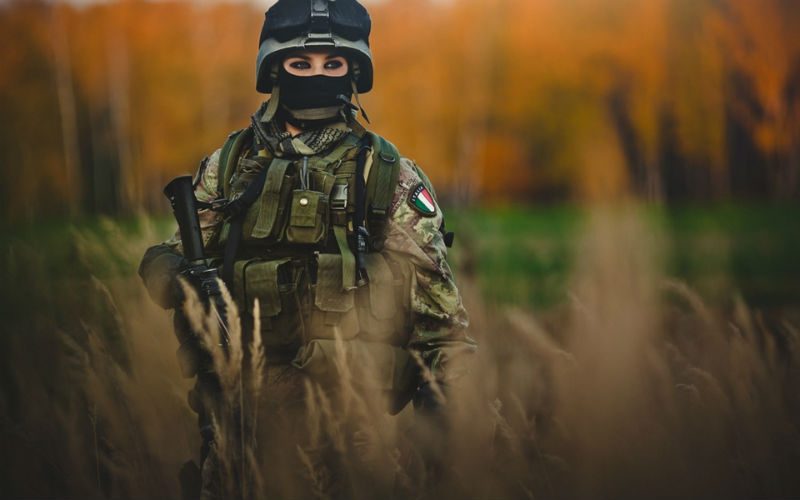Militarization of Police Impacts All Marginalized People.
The live-stream scenes out of Ferguson, Missouri even as I write this are so shocking, they could be news feed from the Middle East. Tanks in the streets, SWAT teams pointing assault rifles from them, yet more police in the streets in riot gear, tear gas being lobbed at the news team from Al Jazeera America just minutes ago.
This is America 2014, but it harkens back to America in the summers of the 1960s when my parents were civil rights workers and this was how they and other protestors were treated, it didn’t matter that they had two small children in tow, one not much more than a baby.
All over Twitter, people are posting pictures of police with civil rights protesters in the 1960s juxtaposed with scenes out of Ferguson. The only difference between them is the photos from the 1960s are in black and white.
Michael Brown, an 18-year-old African-American teen due to start college on Aug. 11, was shot to death–possibly as many as ten times–on the afternoon of Aug. 9 by an as-yet unnamed police officer. Brown was unarmed.
His body was left in the street in broiling Missouri heat for more than four hours while police cordoned off the area and protesters began to gather, including Brown’s distraught mother, grandmother (Brown had been on his way to visit her) and stepfather.
Since the killing, there have been protests every day in Ferguson, a suburb outside St. Louis. Every day, protestors have become more calm and police have become more restrictive, shouting at peaceful protestors to go home–even though some have been seen on TV and Internet live stream video standing in their own yards.
Ferguson is small–22,000 people at last census–and majority African-American. Police Chief Tom Jackson, who is white, was previously commander of the SWAT team on the St. Louis police force. Many think his past experience has made him heavy-handed in Ferguson.
In the afternoon and evening of Aug. 13, the situation in Ferguson escalated when police arrested two reporters, Wesley Lowery, who has been covering the story for the Washington Post and Ryan Reilly, covering it for Huffington Post. Lowery tweeted about his arrest and the Washington Post posted video he took with his cell phone late Wednesday night.
If Ferguson looks like a local story, it most definitely is not. It may very well be a flashpoint for a new series of civil rights actions. How far can police go to stifle dissent? How accountable are police to the citizenry? How free is a free press?
The modern LGBT civil rights movement began outside the Stonewall Inn in New York’s Greenwich Village over a series of days that were very similar to the scenes from Ferguson, although with more police violence and more arrests. StorméDeLarverie, a biracial butch lesbian activist who died May 24 at the age of 93, was the person whose altercation with police spurred the crowd to action and set the protests in motion. She has been called the “gay community’s Rosa Parks.”
What has been happening in Ferguson since Saturday is what happened at Stonewall–a marginalized community, regularly threatened, harassed and abused by police, fighting back.
No one died to spark Stonewall. There wasn’t the precipitating tragedy of a young life snuffed out. But what had been happening for years to gay men and lesbians who patronized gay bars was systemic abuse. It was not just the constant harassment and arrests, It was also the subsequent sexual assaults of lesbians and gay men by police and the regular blackmailing of closeted gay men and lesbians, who were threatened with losing their jobs and families.
Marginalized communities–blacks and LGBT people among them–and the police have mostly had a contentious relationship. Our experience has more often been one of harassment and abuse than protection and safety.
And that is what we see in Ferguson–African Americans targeted and marginalized by the police, by the systemic attitude of othering that has long been a tenet of militarizing police in America.
Ferguson is a story that should resonate for everyone. This is a story about race. It is also a story about marginalization and militarization. Are tanks and tear gas needed in a small community that just wants answers about a dead, unarmed teenager? Do reporters have to be arrested and silenced?
When LGBT people look at the legacy of our own abuse by police–which has not ended, either–how can we not feel solidarity with the people of Ferguson, who are fighting for justice, for answers, for the knowledge that the people who are meant to protect them are not, instead, the people they must fear the most.
